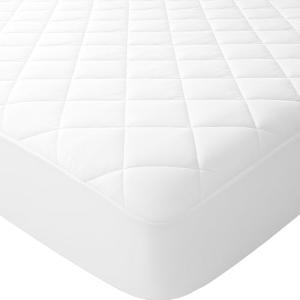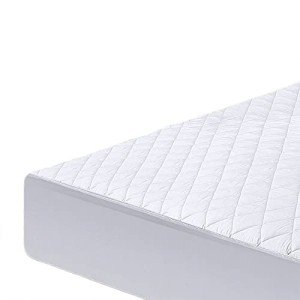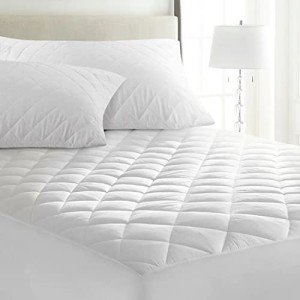When it comes to furnishing a child's room, bunk beds are an incredibly versatile choice. They save space, provide a sense of adventure, and are often a favorite among kids. However, with the fun of bunk beds comes the responsibility of maintaining cleanliness and hygiene. This is where waterproof anti-allergy mattress protectors come into play. This guide will explore the benefits, types, and recommendations for choosing the best mattress protector specifically designed for bunk beds.
Understanding the Importance of Mattress Protectors
What is a Mattress Protector?
A mattress protector is a removable cover that fits over a mattress, serving as a barrier against spills, stains, dust mites, and allergens. For bunk beds, a quality mattress protector is especially important, as children are more prone to accidents and allergies.
Why Choose Waterproof and Anti-Allergy Features?
- Protection from spills and accidents: Children are known for their little mishaps—no one wants to deal with a stained mattress.
- Allergy prevention: Dust mites and allergens can trigger respiratory issues and skin irritations, which are particularly concerning in a shared sleeping environment like a bunk bed.
- Prolonging mattress lifespan: A good protector can prevent damage from dust, moisture, and spills, ultimately extending the life of the mattress.
Features to Look for in a Waterproof Anti-Allergy Mattress Protector
Selecting the right waterproof anti-allergy mattress protector involves considering various features. Below are key attributes to keep in mind:
Waterproofing
- Material: Look for protectors made with polyurethane or similar waterproof materials. This ensures effective barrier against liquids while maintaining breathability.
- Seam Sealing: Check if the seams are sealed to prevent moisture from seeping through.
Anti-Allergy Properties
- Hypoallergenic Materials: Ensure the protector is made from hypoallergenic materials to inhibit the growth of dust mites, mold, and bacteria.
- Certification: Look for certifications like OEKO-TEX or CertiPUR-US that guarantee the product meets specific safety and health standards.
Comfort and Fit
- Fitted Design: Opt for a fitted sheet-style protector that easily covers the mattress and stays in place.
- Softness: The protector should be soft to touch for a comfortable sleeping experience without crinkling sounds.
Ease of Care
- Machine Washable: Select a protector that can be machine washed and dried easily for low-maintenance cleaning.
- Durability: Look for high-quality materials that can withstand regular washing without compromising their effectiveness.
Recommended Products
The following table lists some of the best waterproof anti-allergy mattress protectors suitable for bunk beds:
| Brand | Key Features | Price Range | Where to Buy |
|---|---|---|---|
| SafeRest | 100% waterproof, hypoallergenic, vinyl-free | £30 - £50 | Amazon |
| Linenspa | Soft, breathable, machine washable | £20 - £40 | Walmart |
| Sweet Zzz | Premium materials, moisture-wicking, 10-year warranty | £50 - £80 | Sweet Zzz website |
| Utopia Bedding | Stretchable, quiet, and durable | £15 - £30 | Target |
| Leesa | Eco-friendly, soft touch, 100-night trial | £80 - £120 | Leesa website |
Note: Prices may vary based on sales and promotions.
FAQs About Waterproof Anti-Allergy Mattress Protectors
1. Do I need a mattress protector for bunk beds?
Yes, a mattress protector is essential for bunk beds as it helps protect against spills, stains, and allergens, ensuring a cleaner and healthier sleeping environment for children.
2. How often should I wash the mattress protector?
It is recommended to wash the mattress protector every 1-2 months or more frequently if there are spills or accidents.
3. Will a waterproof mattress protector affect my mattress warranty?
Most mattress warranties will remain valid as long as you use a ”approved cover.” Always check the warranty agreement for specific requirements.
4. Can I use a normal mattress pad instead of a mattress protector?
While a mattress pad provides comfort, it may not offer the same level of protection against spills and allergens as a dedicated mattress protector.
Investing in a waterproof anti-allergy mattress protector for bunk beds is a wise decision for the health and comfort of your children. It shields the mattress from potential damage, creates a safer sleeping environment, and even prolongs the life of the mattress. With multiple options available on the market, parents can easily find a product that meets their budget and preferences. By choosing wisely and maintaining diligence in cleaning, bunk beds can remain a clean, fun, and inviting space for children.
In addition to the advantages discussed, remember that fostering healthy sleeping habits and teaching children about hygiene is just as crucial. With the combination of proper bedding accessories and good routines, parents can ensure that their little adventurers enjoy a safe and comfortable sleep.






